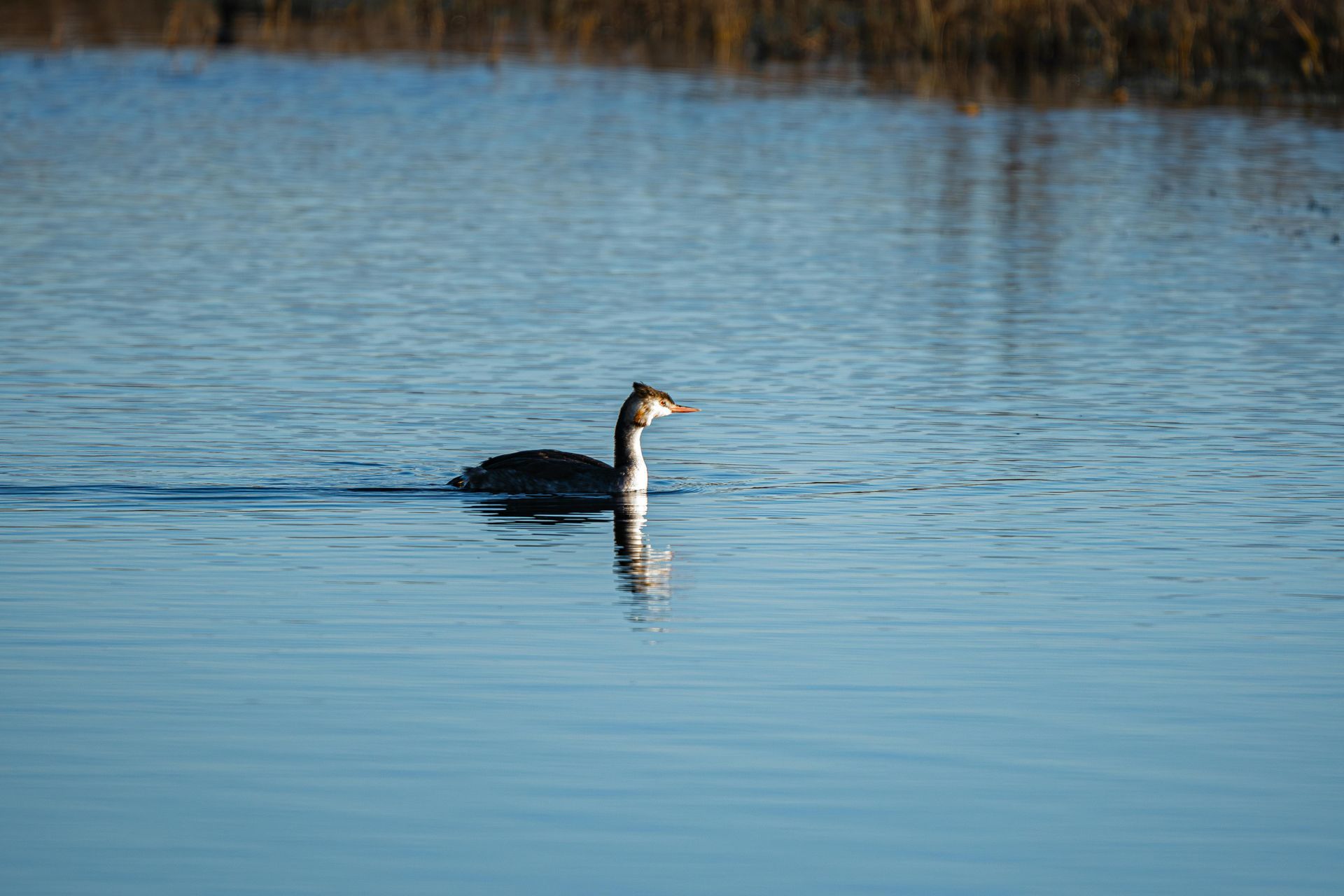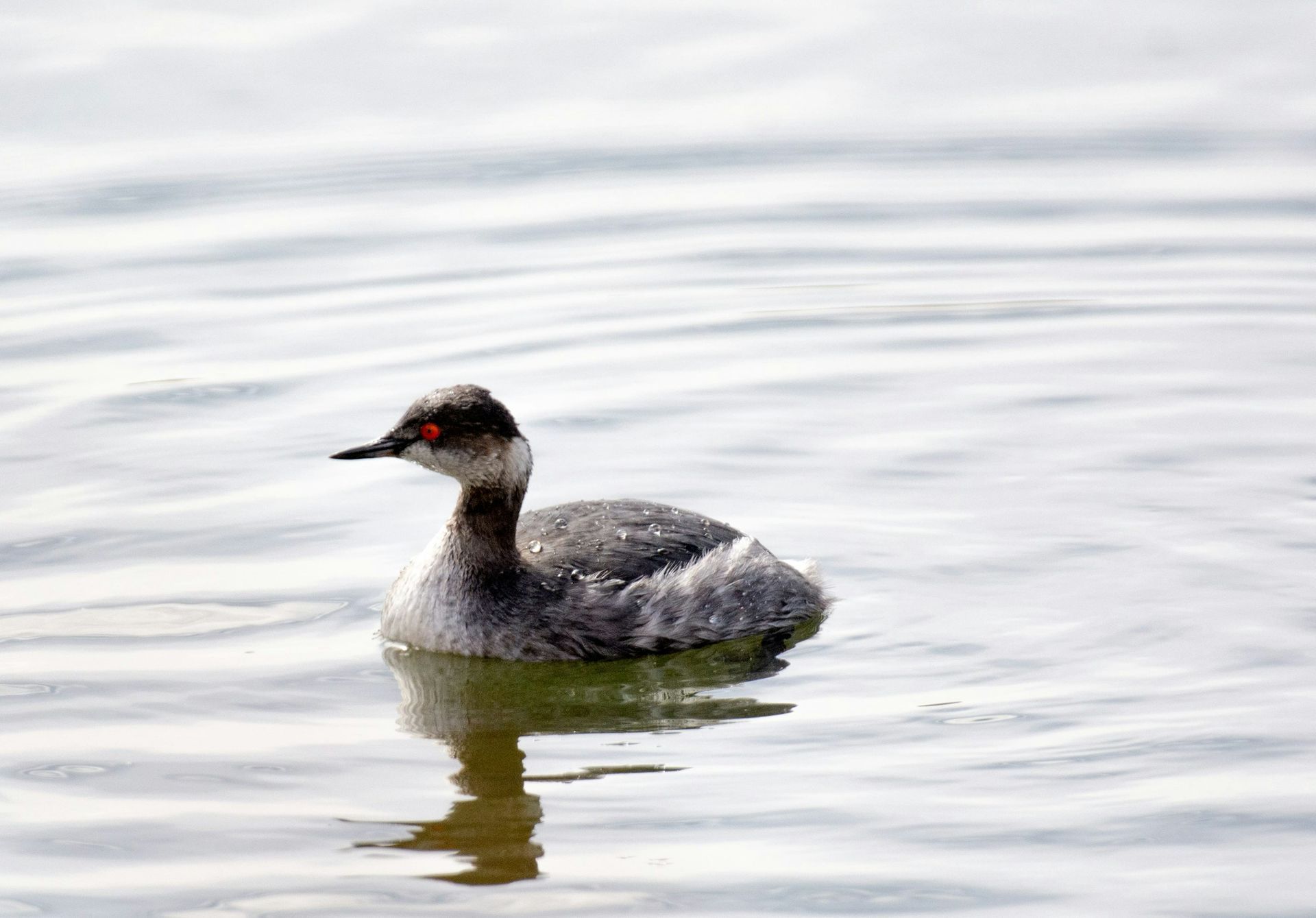Grebes are freshwater diving birds known for their striking plumage, elaborate courtship displays, and excellent swimming abilities. Found on lakes, ponds, and marshes around the world, grebes are highly adapted to life on the water. Their lobed toes and streamlined bodies allow them to dive and pursue prey underwater with remarkable agility.
Grebes range from 9 to 23 inches in length, depending on the species, with slender necks and sharp, pointed bills. Their plumage varies by species and season, with many grebes developing ornate breeding plumage during the spring. Common species in North America include the Western Grebe and Pied-billed Grebe.
Grebes are primarily piscivorous, feeding on small fish, aquatic insects, and crustaceans. They nest on floating vegetation near the water’s edge, and both parents take part in raising the chicks. After hatching, young grebes often ride on their parents’ backs for protection.
Natural predators of grebes include large fish, raptors, and raccoons. Human-related threats such as habitat destruction, pollution, and fishing gear entanglement pose significant risks. Conservation efforts focus on protecting wetland habitats to ensure the survival of these unique birds.

For your safety and the well-being of wildlife, please observe animals from a distance and avoid touching or disturbing them. If you encounter an animal that appears injured or in distress, contact a licensed wildlife rescue organization for guidance before intervening.
Found An Animal? Not sure how to help a wild animal in need? Learn when to step in, who to call, and how to help safely.
Did You Know?
- Grebes can adjust their buoyancy, allowing them to sink slowly into the water without diving.
- Unlike most birds, grebes eat their own feathers, which help protect their stomachs from sharp fish bones.
- Western Grebes perform elaborate mating dances, including synchronized swimming and rushing across the water’s surface.
- Grebe chicks can swim almost immediately after hatching but often ride on their parents’ backs for warmth and safety.
- Some grebes build floating nests anchored to underwater plants, keeping their eggs safe from land predators.
Grebes communicate with their chicks before they even hatch, using soft calls that the unhatched young can hear inside the egg.
Their lobed toes, rather than fully webbed feet, provide excellent propulsion in water.
Grebes migrate at night, using the stars for navigation.
During molting, grebes lose all their primary flight feathers at once, rendering them completely flightless for a period of time.
The fossil record shows that grebes have existed for at least 20 million years.
Problems Faced In The Wild
- Habitat Loss: Wetland drainage and urban development reduce critical nesting and foraging areas.
- Pollution: Contaminants in water sources harm grebes and reduce prey availability.
- Fishing Gear Entanglement: Discarded fishing lines and nets pose serious risks.
- Climate Change: Altered water levels and temperature shifts disrupt breeding and feeding patterns.
- Human Disturbance: Recreational activities in lakes and ponds can disturb nesting grebes.
- Predation: Eggs and chicks are vulnerable to predators such as raccoons and large fish.
Tips For Cohabitation
- Preserve Wetlands: Support conservation efforts that protect and restore natural water habitats.
- Avoid Disturbing Nesting Sites: Keep a safe distance from grebe colonies during breeding season.
- Properly Dispose of Fishing Gear: Prevent entanglement and injury by keeping waterways clean.
- Minimize Boat Traffic: Reduce boating activity near nesting areas to prevent disturbance.
- Plant Native Vegetation: Create natural buffers around ponds and lakes to provide shelter and attract prey.
- Educate Others: Share the importance of grebes in maintaining healthy aquatic ecosystems.



